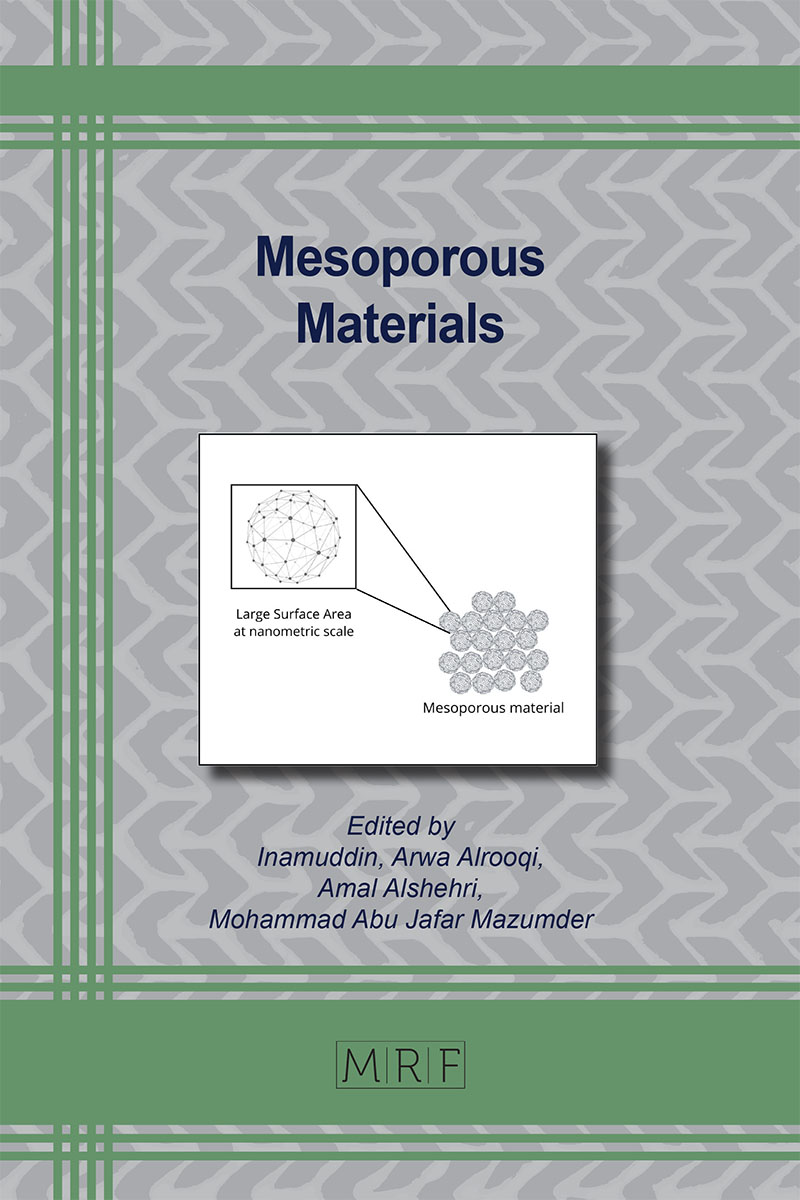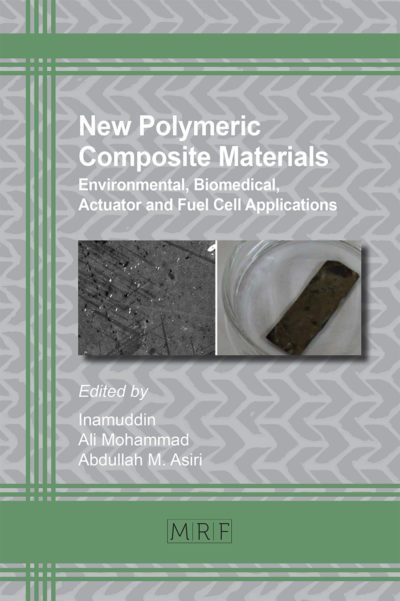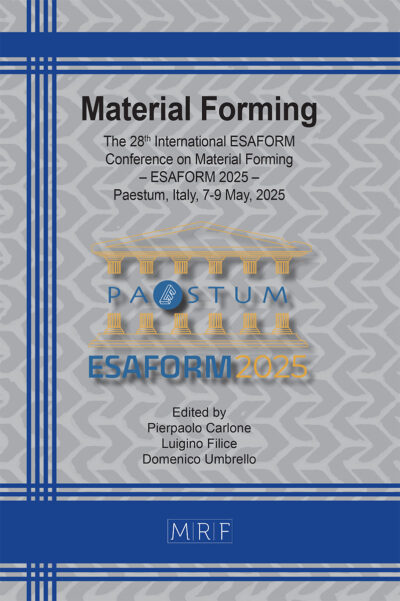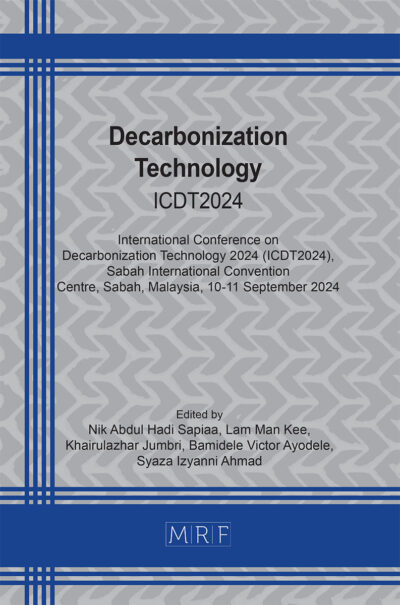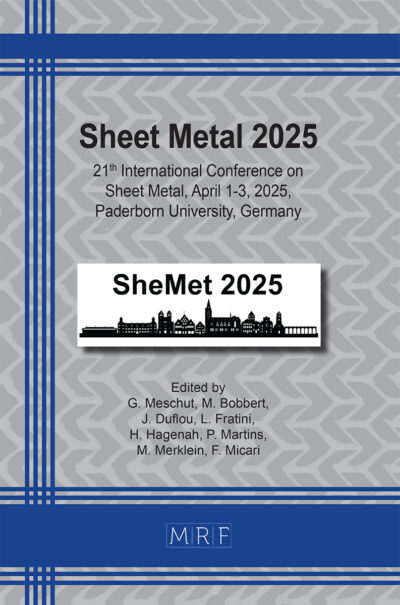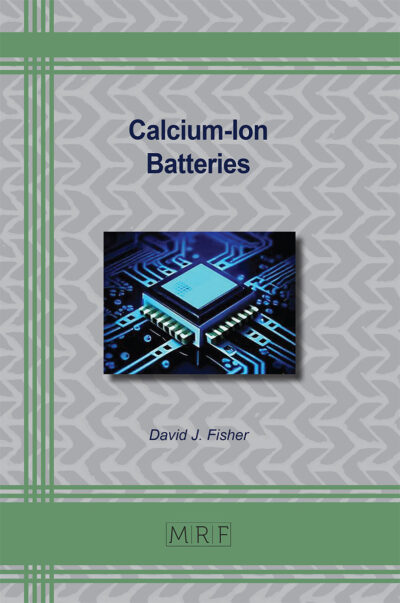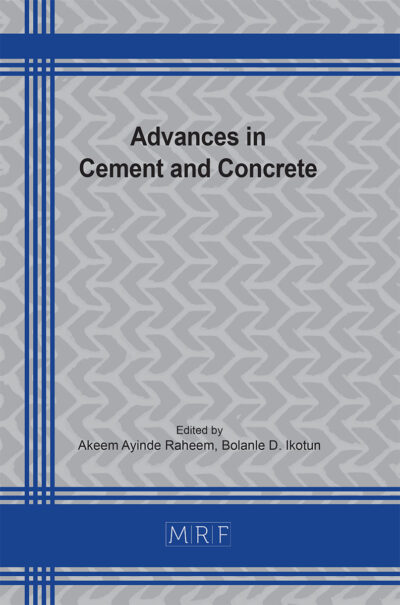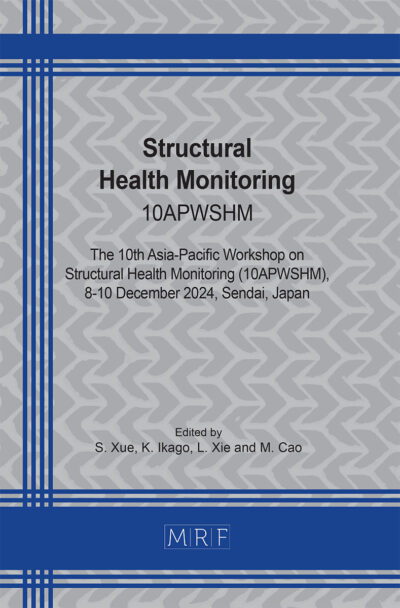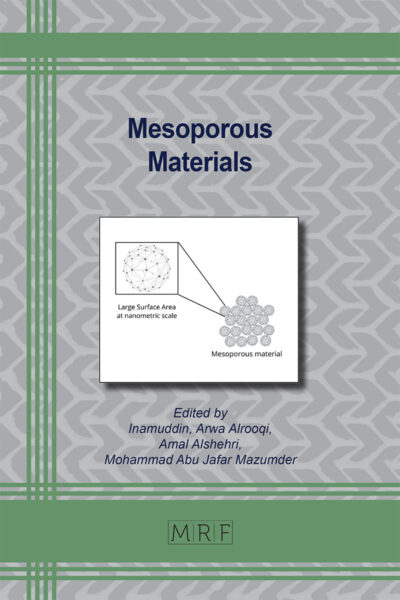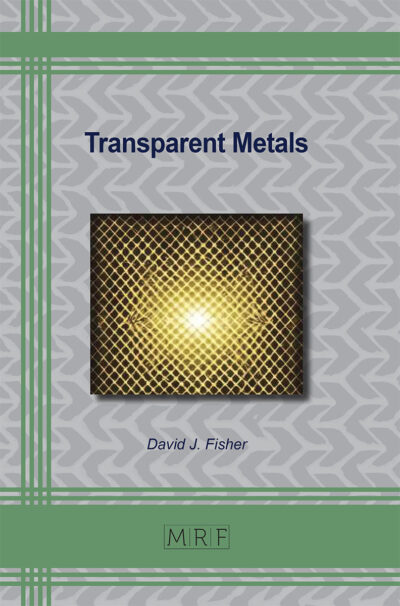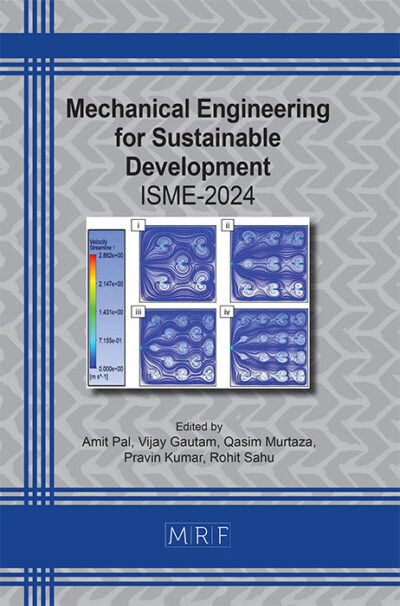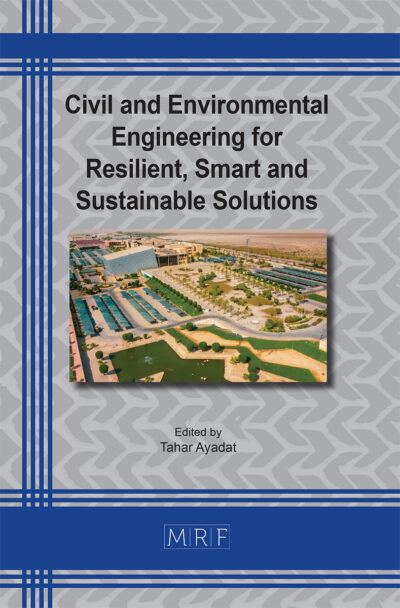Magnetic Mesoporous Materials for the Removal of Pollutants
Tatheer Fatima, Nadia Akram, Khalid Mahmood Zia, Zumaira Siddique, Fozia Anjum
The special combination of large surface area, variable porosity, and magnetic recoverability has made, magnetic mesoporous materials extremely effective and adaptable adsorbents for the removal of pollutants. These materials have improved adsorption capabilities for a variety of contaminants, such as heavy metals, organic dyes, pharmaceuticals, and emerging pollutants. They are usually made of mesoporous silica, carbon or with other embedded magnetic nanoparticles. The magnetic characteristics make regeneration and separation simple, which lowers secondary pollutants and operating expenses. Selectivity and adsorption efficiency are further enhanced by functionalization with different chemical groups. With an emphasis on their potential for effective and sustainable water and air purification applications, this chapter reviews the synthesis techniques, adsorption processes, and current developments in the use of magnetic mesoporous materials for environmental remediation.
Keywords
Mesoporous Materials, Functionalization, Water Treatment, Soil Remediation, Future Perspectives
Published online 3/20/2025, 33 pages
Citation: Tatheer Fatima, Nadia Akram, Khalid Mahmood Zia, Zumaira Siddique, Fozia Anjum, Magnetic Mesoporous Materials for the Removal of Pollutants, Materials Research Foundations, Vol. 173, pp 60-92, 2025
DOI: https://doi.org/10.21741/9781644903452-3
Part of the book on Mesoporous Materials
References
[1] Hoffmann, B., et al., WHO air quality guidelines 2021-aiming for healthier air for all: a joint statement by medical, public health, scientific societies and patient representative organisations. International journal of public health, 2021. 66: p. 1604465. https://doi.org/10.3389/ijph.2021.1604465
[2] Fund, U.N.C.s. and W.H. Organization, Progress on household drinking water, sanitation and hygiene 2000-2022: Special focus on gender. 2024: World Health Organization.
[3] Marcu, D., et al., Contaminants of emerging concern (CECs) and male reproductive health: challenging the future with a double-edged sword. Toxics, 2023. 11(4): p. 330. https://doi.org/10.3390/toxics11040330
[4] Taguchi, A. and F. Schüth, Ordered mesoporous materials in catalysis. Microporous and mesoporous materials, 2005. 77(1): p. 1-45. https://doi.org/10.1016/j.micromeso.2004.06.030
[5] Li, C.M., et al., Functionalized porous silica-based nano/micro particles for environmental remediation of hazard ions. Nanomaterials, 2019. 9(2): p. 247. https://doi.org/10.3390/nano9020247
[6] Li, Y. and J. Shi, Hollow‐structured mesoporous materials: chemical synthesis, functionalization and applications. Advanced Materials, 2014. 26(20): p. 3176-3205. https://doi.org/10.1002/adma.201305319
[7] Laurent, S., et al., Magnetic iron oxide nanoparticles: synthesis, stabilization, vectorization, physicochemical characterizations, and biological applications. Chemical reviews, 2008. 108(6): p. 2064-2110. https://doi.org/10.1021/cr068445e
[8] Zhao, X., et al., Synthesis of magnetic metal-organic framework (MOF) for efficient removal of organic dyes from water. Scientific reports, 2015. 5(1): p. 11849. https://doi.org/10.1038/srep11849
[9] Acharya, G.R., Dynamics of Confined Liquids at Multiple Time Scales. 2022, Wayne State University.
[10] Guo, G., et al., Hydroconversion of Kraft lignin for biofuels production using bifunctional rhenium-molybdenum supported zeolitic imidazolate framework nanocatalyst. Bioresource Technology, 2021. 321: p. 124443. https://doi.org/10.1016/j.biortech.2020.124443
[11] Hu, M., et al., Direct carbonization of Al-based porous coordination polymer for synthesis of nanoporous carbon. Journal of the American Chemical Society, 2012. 134(6): p. 2864-2867. https://doi.org/10.1021/ja208940u
[12] Sevilla, M. and A.B. Fuertes, The production of carbon materials by hydrothermal carbonization of cellulose. Carbon, 2009. 47(9): p. 2281-2289. https://doi.org/10.1016/j.carbon.2009.04.026
[13] Beck, J.S., et al., A new family of mesoporous molecular sieves prepared with liquid crystal templates. Journal of the American Chemical Society, 1992. 114(27): p. 10834-10843. https://doi.org/10.1021/ja00053a020
[14] Zhao, D., et al., Nonionic triblock and star diblock copolymer and oligomeric surfactant syntheses of highly ordered, hydrothermally stable, mesoporous silica structures. Journal of the American Chemical Society, 1998. 120(24): p. 6024-6036. https://doi.org/10.1021/ja974025i
[15] Kresge, a.C., et al., Ordered mesoporous molecular sieves synthesized by a liquid-crystal template mechanism. nature, 1992. 359(6397): p. 710-712. https://doi.org/10.1038/359710a0
[16] Ryoo, R., et al., Ordered mesoporous carbons. Advanced Materials, 2001. 13(9): p. 677-681. https://doi.org/10.1002/1521-4095(200105)13:9<677::AID-ADMA677>3.0.CO;2-C
[17] Stein, A., B.J. Melde, and R.C. Schroden, Hybrid inorganic-organic mesoporous silicates-nanoscopic reactors coming of age. Advanced materials, 2000. 12(19): p. 1403-1419. https://doi.org/10.1002/1521-4095(200010)12:19<1403::AID-ADMA1403>3.0.CO;2-X
[18] Sun, W., et al., Overexpression of a Freesia hybrida flavonoid 3-O-glycosyltransferase gene, Fh3GT1, enhances transcription of key anthocyanin genes and accumulation of anthocyanin and flavonol in transgenic petunia (Petunia hybrida). In Vitro Cellular & Developmental Biology-Plant, 2017. 53: p. 478-488. https://doi.org/10.1007/s11627-017-9836-3
[19] Brinker, C.J. and G.W. Scherer, Sol-gel science: the physics and chemistry of sol-gel processing. 2013: Academic press.
[20] Gupta, A.K. and M. Gupta, Synthesis and surface engineering of iron oxide nanoparticles for biomedical applications. biomaterials, 2005. 26(18): p. 3995-4021. https://doi.org/10.1016/j.biomaterials.2004.10.012
[21] Yang, H., M. Zhu, and Y. Li, Sol-gel research in China: a brief history and recent research trends in synthesis of sol-gel derived materials and their applications. Journal of Sol-Gel Science and Technology, 2023. 106(2): p. 406-421. https://doi.org/10.1007/s10971-022-05750-y
[22] Sun, S., et al., Monodisperse mfe2o4 (m= fe, co, mn) nanoparticles. Journal of the American chemical society, 2004. 126(1): p. 273-279. https://doi.org/10.1021/ja0380852
[23] Xin, W. and Y. Song, Mesoporous carbons: recent advances in synthesis and typical applications. Rsc Advances, 2015. 5(101): p. 83239-83285. https://doi.org/10.1039/C5RA16864C
[24] Alphandéry, E., Biodistribution and targeting properties of iron oxide nanoparticles for treatments of cancer and iron anemia 2.
[25] Jiao, Y., et al., The Efficient Removal for Cr (Vi) of Magnetic Adsorbent with Mesoporous Structure of Walnut Shell Filled by Fe3o4. Available at SSRN 4128533.
[26] Lu, A.H., E.e.L. Salabas, and F. Schüth, Magnetic nanoparticles: synthesis, protection, functionalization, and application. Angewandte chemie international edition, 2007. 46(8): p. 1222-1244. https://doi.org/10.1002/anie.200602866
[27] Jaishankar, M., et al., Toxicity, mechanism and health effects of some heavy metals. Interdisciplinary toxicology, 2014. 7(2): p. 60-72. https://doi.org/10.2478/intox-2014-0009
[28] Jones, K.C. and P. De Voogt, Persistent organic pollutants (POPs): state of the science. Environmental pollution, 1999. 100(1-3): p. 209-221. https://doi.org/10.1016/S0269-7491(99)00098-6
[29] Liu, C., et al., Effect of aluminium dust on secondary organic aerosol formation in m-xylene/NO x photo-oxidation. Science China Earth Sciences, 2015. 58: p. 245-254. https://doi.org/10.1007/s11430-014-5023-0
[30] Ruthven, D.M., Principles of adsorption and adsorption processes. 1984: John Wiley & Sons.
[31] Zhang, Z., et al., Efficient removal of methylene blue using the mesoporous activated carbon obtained from mangosteen peel wastes: Kinetic, equilibrium, and thermodynamic studies. Microporous and Mesoporous Materials, 2021. 315: p. 110904. https://doi.org/10.1016/j.micromeso.2021.110904
[32] Shan, H., et al., Thiol-Functionalized Nitrogen-Rich Covalent Organic Framework For Fluorescence Detection and Removal of Hg (Ii) from Water. Available at SSRN 4875131.
[33] Li, Q., et al., Preparation, characterization, and highly effective mercury adsorption of L-cysteine-functionalized mesoporous silica. New Journal of Chemistry, 2014. 38(1): p. 248-254. https://doi.org/10.1039/C3NJ00799E
[34] Karim, A.H., Synthesis of Carbon Nanotubes-mesostructured Silica Nanoparticles Composites for Adsorption of Methylene Blue. 2015, Universiti Teknologi Malaysia.
[35] Pope III, C.A. and D.W. Dockery, Health effects of fine particulate air pollution: lines that connect. Journal of the air & waste management association, 2006. 56(6): p. 709-742. https://doi.org/10.1080/10473289.2006.10464485
[36] Liu, J., et al., The rise of two-dimensional-material-based filters for airborne particulate matter removal. Advanced Fiber Materials, 2023. 5(2): p. 461-483. https://doi.org/10.1007/s42765-022-00242-8
[37] Tian, Z., et al., Efficient capture of airborne PM by nanotubular conjugated microporous polymers based filters under harsh conditions. Journal of Hazardous Materials, 2022. 423: p. 127047. https://doi.org/10.1016/j.jhazmat.2021.127047
[38] Liu, B., et al., Graded Synthesis of Hierarchical Activated Carbon and Mesoporous Silica Microspheres from High Carbon Coal Gasification Fine Slag for Ultra-High Capacity Adsorption of Methyl Blue. Available at SSRN 4175025.
[39] Adireddy, S.R., High Yield Solvothermal Synthesis of Hexaniobate Based Nanocomposites via the Capture of Preformed Nanoparticles in Scrolled Nanosheets. 2013, University of New Orleans. https://doi.org/10.1021/cm402352k
[40] Sarkar, S. and B. Bandyopadhyay, Aldehyde as a potential source of aminol in troposphere: Influence of water and formic acid catalysis on ammonolysis of formaldehyde. Atmospheric environment, 2019. 213: p. 223-230. https://doi.org/10.1016/j.atmosenv.2019.05.069
[41] Karpinska, K., Generation and functionalization of biodegradable nanoparticles for biomedical applications. 2020: The University of Manchester (United Kingdom).
[42] Ho, Y.-S. and G. McKay, Pseudo-second order model for sorption processes. Process biochemistry, 1999. 34(5): p. 451-465. https://doi.org/10.1016/S0032-9592(98)00112-5
[43] Weber Jr, W.J. and J.C. Morris, Kinetics of adsorption on carbon from solution. Journal of the sanitary engineering division, 1963. 89(2): p. 31-59. https://doi.org/10.1061/JSEDAI.0000430
[44] Yang, H., et al., A water-insoluble and visible light induced polyoxometalate-based photocatalyst. Chemical communications, 2010. 46(14): p. 2429-2431. https://doi.org/10.1039/b919868g
[45] Dzumbira, W., et al., Separation and remediation of environmental pollutants using metal-organic framework-based tailored materials. Environmental Science and Pollution Research, 2021: p. 1-21.
[46] Shahbazi, K., M. Marzi, and H. Rezaei, Heavy metal concentration in the agricultural soils under the different climatic regions: a case study of Iran. Environmental earth sciences, 2020. 79(13): p. 324. https://doi.org/10.1007/s12665-020-09072-6
[47] Liu, N., et al., Hierarchical architectures of Ag clusters deposited biomimetic membrane: synthesis, emulsion separation, catalytic and antibacterial performance. Separation and Purification Technology, 2020. 241: p. 116733. https://doi.org/10.1016/j.seppur.2020.116733
[48] Pal, N., J.-H. Lee, and E.-B. Cho, Recent trends in morphology-controlled synthesis and application of mesoporous silica nanoparticles. Nanomaterials, 2020. 10(11): p. 2122. https://doi.org/10.3390/nano10112122
[49] Williams, A.J., et al., Sourcing data on chemical properties and hazard data from the US-EPA CompTox Chemicals Dashboard: A practical guide for human risk assessment. Environment international, 2021. 154: p. 106566. https://doi.org/10.1016/j.envint.2021.106566
[50] Srivastava, A.K., et al., Coupled catalytic dephosphorylation and complex phosphate ion-exchange in networked hierarchical lanthanum carbonate grafted asymmetric bio-composite membrane. Journal of Colloid and Interface Science, 2022. 606: p. 2024-2037. https://doi.org/10.1016/j.jcis.2021.09.173
[51] Fizir, M., et al., Design approaches, functionalization, and environmental and analytical applications of magnetic halloysite nanotubes: A review. Clays and Clay Minerals, 2022. 70(5): p. 660-694. https://doi.org/10.1007/s42860-022-00210-8
[52] Peres, R.M., J.S. Forero, and R.J. Corrêa, Tuning the graphene oxide chemistry by excimer formation: The stabilization of electron/hole pair on sp2 surface. Journal of Photochemistry and Photobiology A: Chemistry, 2021. 414: p. 113266. https://doi.org/10.1016/j.jphotochem.2021.113266

